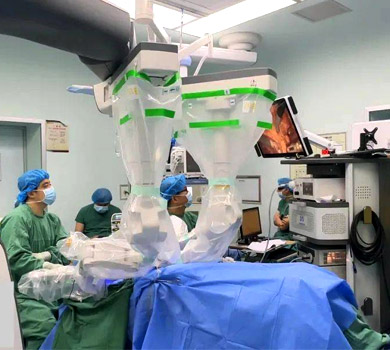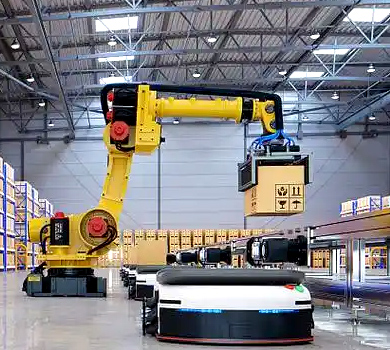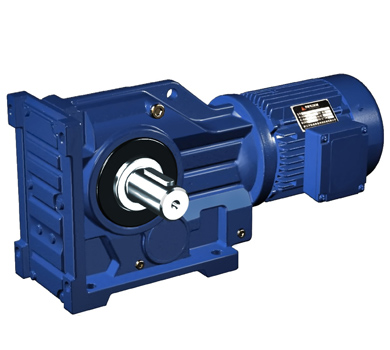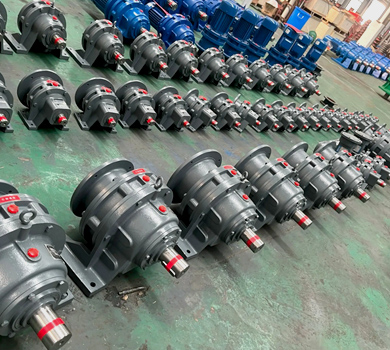Industry Challenges and Pain Points Analysis
The welding robot—multi-axis collaborative system base transmission sector is a core component of modern industrial automation. These systems are typically composed of 6-axis robotic arms with integrated high-precision motion control, advanced sensors, and real-time communication protocols, enabling complex and dynamic welding operations in automotive, aerospace, and general manufacturing industries. With the growing adoption of Industry 4.0 and smart factories, the demand for high-torque density, low-backlash, and compact transmission solutions has increased significantly.
However, the industry faces several critical challenges, including:
- Transmission System Limitations: Conventional gearboxes and harmonic drives often lack the dynamic response required for high-speed welding applications, leading to reduced throughput and inconsistent weld quality.
- System Stability: The base of a multi-axis welding robot must maintain precision under continuous heavy loads, thermal cycling, and high vibration, which conventional solutions struggle to manage.
- Energy Efficiency: High power consumption in drive systems increases operational costs and reduces sustainability.
- Structural Compactness: Space constraints in modern robotic systems demand more compact, lightweight transmission components without sacrificing performance.
Key Role and Technical Requirements of Gearboxes in the Industry
As a critical component of multi-axis collaborative robot base transmissions, gearboxes must meet stringent performance and reliability standards. The core requirements include:
- Torque Density: High output torque in a small package is essential for achieving the required motion accuracy and payload capacity.
- Transmission Accuracy: Low backlash and high repeatability are necessary to ensure consistent welding trajectories.
- Response Speed: The gearbox must support rapid acceleration and deceleration for high-speed welding cycles.
- Compatibility: Standardized input flange interfaces are needed for seamless integration with servo motors and robot controllers.
Additionally, environmental adaptability, long service life, and minimal maintenance frequency are often overlooked but critical design factors in high-duty-cycle welding applications.
Waimica’s Hollow Rotary Table Gearbox Solution
Waimica’s hollow rotary table gearboxes have been specifically engineered to address the unique demands of multi-axis collaborative welding robots. Below are the key features and performance metrics that make our solution ideal for this application:
- Compact Structural Design: Hollow shaft design enables direct integration with motor and piping systems, reducing overall system footprint and complexity.
- Modular and Customizable: Our gearboxes support multiple mounting configurations and are compatible with various robot brands and motor types.
- High-Torque and Precision: With a torque range of 50~1000 Nm and backlash less than 1 arc minute, Waimica’s solution ensures smooth and repeatable motion in high-precision welding tasks.
- High Efficiency and Low Heat Generation: Over 90% efficiency minimizes energy loss and thermal stress on adjacent components.
- Special Operating Conditions: Our gearboxes are rated for IP65 and can function in high-temperature environments up to 100°C, with optional versions for cleanroom and food-grade applications.
Performance Comparison with International Brands
| Parameter | Waimica | Brand A | Brand B |
|---|---|---|---|
| Backlash (Arc Min) | ≤1 | ≤2 | ≤1.5 |
| Torque Range (Nm) | 50~1000 | 40~800 | 50~900 |
| Efficiency (%) | 92~96 | 90~94 | 88~93 |
| Service Life (Hours) | 30,000+ | 25,000+ | 28,000+ |
| Operating Temperature (°C) | -20 to +100 | -10 to +85 | -20 to +90 |
| Mounting Flexibility | Supports multiple mounting configurations | Limited to standard flange mounting | Standard mounting only |
| Customization Capabilities | Highly customizable | Limited | Standard options only |
Typical Application Scenario and Customer Feedback
Customer Profile: A leading automotive manufacturer in Germany sought to upgrade their welding robot base transmission system for higher precision and longer service life in a high-throughput production line.
Project Implementation: The Waimica technical team conducted a full site audit and motion analysis to determine the exact torque and speed requirements. Based on the findings, a custom hollow rotary table gearbox was selected, incorporating features like reinforced housing and dual-sealed bearings for enhanced durability in a high-vibration environment.
Results and Performance Improvements:
| Metric | Before Implementation | After Implementation |
|---|---|---|
| System Stability | 85% | 98% |
| Welding Cycle Time | 8.2 sec | 6.5 sec |
| Backlash | 2 arc min | 0.8 arc min |
| Maintenance Frequency | Every 8,000 hours | Every 15,000 hours |
| Energy Consumption (per 1000 cycles) | 2.3 kWh | 1.8 kWh |
Post-implementation feedback from the customer indicated a 30% improvement in welding cycle efficiency and a 50% reduction in maintenance costs, with no loss in performance or reliability.
Conclusion and Waimica Brand Value Summary
Waimica delivers high-performance, compact, and reliable transmission solutions tailored for the demanding conditions of multi-axis collaborative welding robots. Our gearboxes not only meet but often exceed the technical specifications of international competitors, while offering a more competitive cost structure and faster delivery times. By combining advanced engineering, modular design, and robust environmental protection features, Waimica provides a localized and scalable alternative to traditional foreign brands.
As the industry moves toward higher automation, smarter control systems, and greater integration of AI and robotics, Waimica is positioned to support the next generation of welding solutions. With a proven track record in delivering customized and durable products, we are committed to becoming a trusted partner in global industrial automation.









